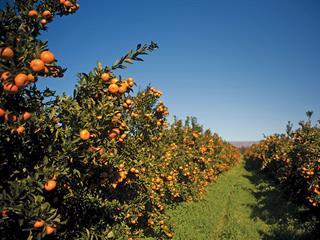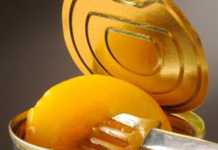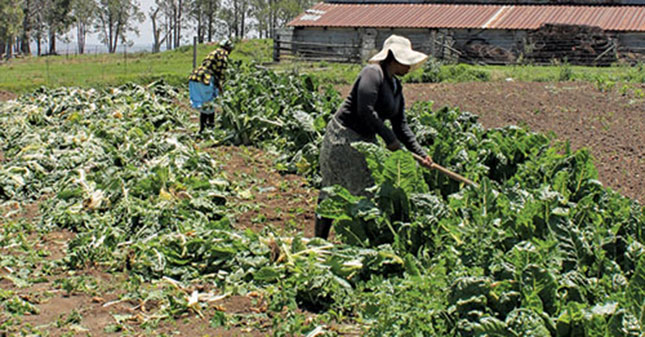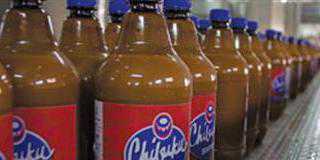
Why is the US market opening up to South Africa?
The Americans are starting to see citrus black spot as less of a threat. They seem to agree with South African scientists’ findings that citrus black spot won’t spread through exports. Final export standards and conditions still need to be clarified and agreed upon, however, before fruit can be exported to this market.
READ:Export success for Western Cape chilli exporters
What is the Western Cape Citrus Producers’ Forum?
It’s an Article 21 company that represents citrus producers of the black spot-free areas in South Africa that up until now were the only regions allowed to export fruit to the United States. This includes producers from the Western Cape, Southern Cape, Vaalharts and Orange River. We started out as the Navel Alliance, but this was changed to the Citrus Alliance and later to the Western Cape Citrus Producers’ Forum (WC CPF).
Its main purpose is to render the high-paying American market as profitable as possible for its members. Members invested millions of rands to develop this market. One of the greatest lessons learnt so far is that it is a sensitive market. You cannot storm blindly into it, as that will destroy the market for everybody.
Tell us more about your initial experiences in the US market.
This market opened up for navels from black spot-free regions in South Africa in 1999. Everybody involved – from the producers to the exporters and importers – lost a lot of money during the first two to three years. While Australia, who up until then was the major southern hemisphere player, generated US$26 a carton, South Africa averaged between US$12 and US$14 a carton.
Australia exported on average 1,2 million cartons a year, while we went in with 48 000 cartons in 1999. The next year we sent about 450 000 cartons and in 2001 around 680 000 cartons.
Where did South Africa go wrong?
We seemed to have got everything wrong: quality, size, volume, timing and the market. The dollar was a strong currency even back then, and we thought there were 240 million to 280 million US consumers with a lot of money who would love to buy our product. The reality showed the opposite.
How did you address this situation?
A closer look at the Australian sales techniques showed that they used a multiple-channel, single-desk marketing strategy. Although there were many production and exporting channels, they used only one importer on the other side, and the fruit was sold under a single brand, Riversun.
With deregulation, we’d just come out of a one-channel marketing system and didn’t want to go the same route. So the producers developed their own business model in which the interests of the individual are sometimes sacrificed to satisfy the interests of the group. Even so, care was taken not to compromise the competitive edge between the parties.
How does this business model work?
Producers, exporters and importers have annual planning meetings at which importers indicate the volume of citrus per cultivar they want each week during the coming marketing season. Producers and exporters then stick to these volumes to ensure they don’t flood the market.
In general, this means that producers send only 30% to 35% of their best fruit to this market. In addition, a South African producer is present in the US to monitor quality and volumes throughout the marketing season. Seven or eight producers take turns to fulfil this role for two to three weeks during the season. If something is wrong with a consignment, the representative notifies the producer and exporter as soon as possible.
Sometimes, the representative even phones producers to congratulate them on the quality of their fruit! Isn’t this against the regulations of the competition commission? The competition commission has granted its approval for the operations of the WC CPF. It’s important to take note, however, that prices are not discussed. Good prices follow if you get the quality, volume and marketing bracket right.
What else did you do to promote South African citrus?
When South Africa entered this market, a summer citrus category didn’t exist in the US as in Europe. We also found that American consumers are very patriotic. They would much rather buy a product from the US than from another country.
Because the US is a citrus-producing country, we realised we had to supply the market with a fruit that consumers were familiar with in terms of quality and physical appearance.
We embarked on a marketing campaign to establish South African Summer Citrus as a brand. Individual producers and exporters could still use their own brands, but citrus that complied with our strict specifications on internal quality and physical appearance could also sell their fruit under this new brand name.
In addition, we exported our fruit only during the US off-season, between July and October, to avoid competing with the local market. These interventions definitely paid off – South African navel exports grew from 1,74 million cartons in 2011 to 2,14 million cartons in 2014. Clementine exports over the same period grew from 262 515 cartons to 438 020 cartons.
At the same time, rejection rates declined from 10% to below 5%, which shows that we’re complying with market regulations. We try to build the market by about 7% each year.
How do you see South Africa’s future in this market?
To stay relevant in the US market, South Africa has to keep track of consumer trends and ensure it stays out of the market when American citrus is available.
The production window is shortening because Californian producers are planting more early and late citrus cultivars. At the moment, they produce around 60 million cartons of navel, 66% of which are sold in the US, and 10 million cartons of Valencia, most of which is sold in the US. Keep in mind that Florida and Texas are also producing citrus.
In addition to this, the citrus market is undergoing fundamental changes as new items replace the long-standing favourites. Oranges, for example, are being systematically replaced by more compact seedless and easy-to-peel mandarins. Mandarins have increased by 89% in dollar sales, from around US$350 million (R4,1 billion) in 2009 to about US$680 million (R8 billion) in 2013.
Orange sales in terms of value in dollars fell from US$790 million (R9,3 billion) in 2010 to below US$760 million (R8,9 billion) in 2012 and partially recovered to US$765 million (R9 billion) in 2013.
Phone Piet Smit on 082 551 1703 or email him at [email protected]
This article was originally published in the 20 March 2015 issue of Farmer’s Weekly.













